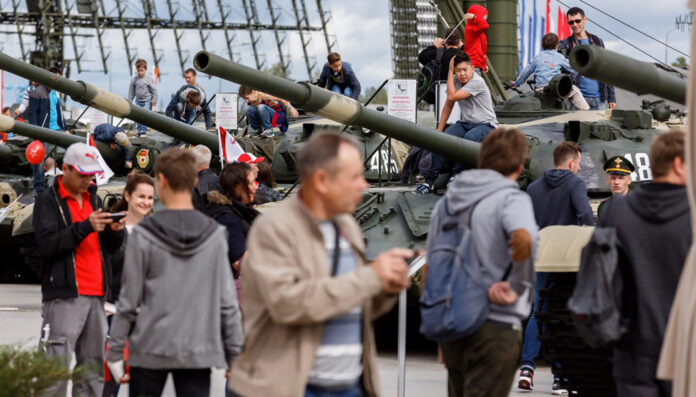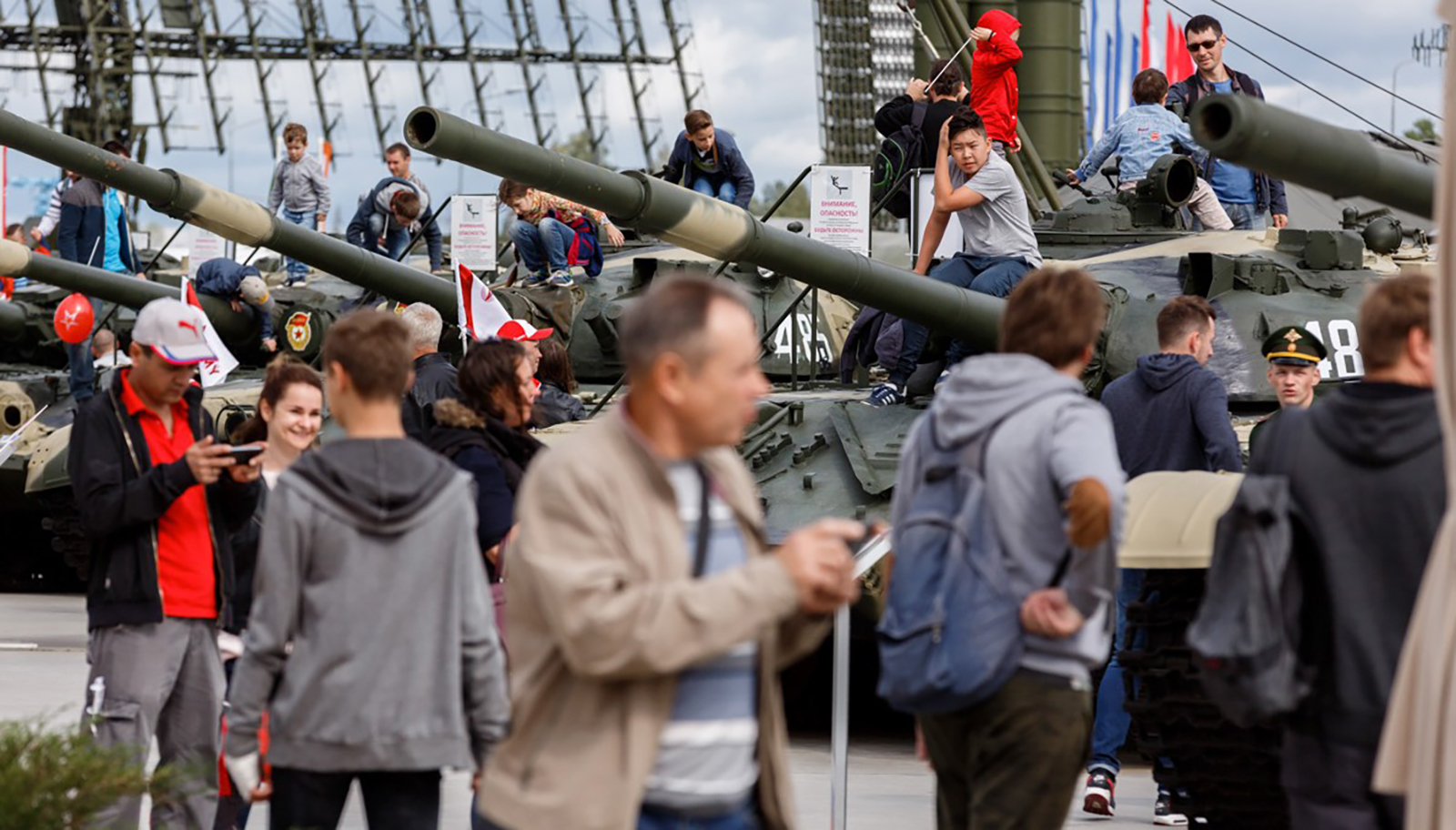In the West, the primacy of domestic objectives, the “long war” against Islamic terrorism and the perception of international rivalries through the prism of geo-economics have for a time obscured the Russian threat. However, Russia has largely professionalized, re-equipped, mobile and projectable forces (Ukraine, Syria, Libya, sub-Saharan Africa). Clearly, the “besieged fortress” syndrome does not exclude geopolitical adventurism, including in the “far abroad”.
In the West, the primacy of domestic objectives (economic growth, well-being and so-called “societal” demands), the “long war” against Islamic terrorism, and the perception of power rivalries through the prism of geo-economics have for a time combined their effects to obscure the Russian threat. We remember Barack Obama camped Russia as a simple “regional power”. If the state of mind is no longer the same today, it remains that Russia’s military power, i.e. the place of the armed forces in Russia’s grand strategy and their capacity to win, is often relativized. The supreme argument is to compare Russia’s military budget (about $60 billion per year) with that of the United States ($740 billion). Moreover, Russia’s obsidian complex (the “besieged fortress”) would lead to a defensive strategy. In short, “much ado about nothing”? No, not at all.
The depreciative judgment of the Russian military power can be explained by the shock of the images of the period following the break-up of the USSR: a “ragged army” of demoralized conscripts, defeated during the first Chechen war (1994-1996), the second conflict being swept away by massive bombing (1999-2003). During the decade of 2000, an oil shock bailed out the Russian state coffers, allowing Vladimir Putin to finance rearmament. However, if the war against Georgia (August 2008) was quickly victorious, the details of the operations expose weaknesses and dysfunctions: obsolete equipment, weak communication systems and satellite means. The Georgian army only yielded to numbers.
Following this war, a reform was carried out by Anatoli Serdyukov, Minister of Defence (2008-2012), and his successor, Sergey Shoygu. The military budget is increased to 3-4% of GDP (depending on the year), which represents an amount of about 60 billion dollars per year. The range of annual expenditure calculated in this way is between 150 and 180 billion dollars, which is considerable (not counting what is not included in the military budget). Covering the period 2011-2020, a major rearmament plan provides for a budget of 600 billion dollars.
The government’s stated objective is to have a largely professionalized, flexible and operational army, re-equipped with new weapons and military hardware. Notwithstanding recruitment problems (military service has been maintained but reduced to one year), delays in armament programs, the effects of inflation, and the effects of Western sanctions on technology transfers, the Serdioukov reform and the modernization of the army are bearing fruit. Finally, a structural reform is being implemented!
The second largest army in the world (2.9 million), the Russian army has nearly one million men in uniform, 80% of whom are professionals. The special forces, paratroopers and marine infantry are almost all professionals: they are projection units used in external interventions. Year in, year out, the objective of having 70% of the army re-quipped has been achieved. Despite a cyclical budgetary setback (pandemic, fall in oil prices last year and recession), the Russian military effort is a long-term one: the 2018-2027 modernization plan mobilizes amounts comparable to those of the previous one. A modernized, reactive and mobile army, but for what political objectives? Analysts point to the feeling of Russian vulnerability and the fear of encirclement, a strategic culture marked by the great invasions of the past (and the immense conquests of Russia’s long history?) and the geopolitical representation of Russia as a “besieged fortress”. Strategic bastions would materialize this fortress, and the military doctrine would be strictly defensive. The keystone of the edifice, the nuclear weapon, would ensure the dissuasion of powers wishing to attack Russia.
The fact is that the nuclear triad has been renewed, while the modernization of conventional forces theoretically makes it possible to raise the threshold of nuclearization of a conflict. Does this mean that the Russian government shares the Western vision of nuclear weapons? The Russian concept of “de-escalation” through the use of nuclear weapons during an armed conflict, with the search for a military effect on the ground, is the subject of strategic discussions and raises doubts in the West. Even more doubtful is the emphasis on hypersonic missiles and other nuclear torpedoes, presented as breakout weapons. Is it a question of dissuading or intimidating, or even coercing, as part of a strategy of action, with positive goals (i.e. strategic gains)?
The constitution of strategic bastions, in the north, south and east, is concretely translated into “anti-access bubbles” (A2/AD) that try to lock international waters: the Baltic and Barents Seas; the Black Sea/Ponto-Mediterranean Basin; the Sea of Okhotsk. Well beyond the borders of Russia. From the Baltic to the Black Sea, the Kremlin has a mass of manoeuvre without equivalent in Europe, capable of exerting pressure on land, in the air and at sea. It is a question of testing the opposing defences and supporting Russia’s policy on its western bangs.
In the Arctic, the remilitarization of the coastline is not a sign of concern about the effects of melting ice on the northern borders. Seen from Moscow, the Arctic is a “new frontier” whose conquest will renew Russian power. The ambition goes beyond geo-economics, i.e. traffic issues (the Northern Sea Route) and the development of oil and gas deposits (Yamal Peninsula). On this front of a new cold war with the West, Russia is militarily supporting its maritime claims (1.2 million km² including the North Pole).
In truth, the mere examination of the facts attests to the reconstitution of an effective Russian army and to the dynamic character of its foreign strategy. After intervening in Ukraine and taking over territories (Crimea and its maritime zone, a third of the Donbass, the Sea of Azov), the Russian army has moved into Syria (a gateway to the Middle East) and the Eastern Mediterranean. It has gained a foothold in Cyrenaica (Libya) and obtained naval facilities in Sudan. By means of proxy forces (the Wagner group), already used in Syria and Libya, Russia is developing its presence in sub-Saharan Africa: today, the Central African Republic; tomorrow, Mali? Already, Russia, the second largest arms seller in the world, is the leader in Africa.
It is certainly possible to discuss the expression “hybrid war” or “Guerassimov doctrine”. In his 2013 speech, the Chief of Staff of the Armed Forces claimed not to expose Russian military strategy but the model of covert warfare that the West would conduct. Yet isn’t there a mirror effect here? The Russian military has been able to design a type of irregular warfare, with several lines and fields of operations (propaganda, disinformation and psychological warfare, renewed by digital technologies).
Russia’s ability to wage an undeclared “multi-field war” with strategic gains is a fact. This know-how constitutes a threat for the neighboring states, militarily inferior except for People’s China, with which Russia strengthens its politico-military links. Both reality and perspective, the reconstitution of its military power will worry all the more because it is part of a revisionist geopolitical project, carried by a grand strategy that mobilizes different vectors of force.
In other words, it would be wrong to think that Russia is satisfied on the territorial level, as the use of armed force in recent years is explained by exceptional circumstances. The Kremlin will seize the slightest opportunity and, if necessary, will force the course of events. Let’s remember Catherine II’s formula: “I have no other way to defend our borders than to extend them.”
Associate professor of history and geography and researcher at the French Institute of Geopolitics (University of Paris VIII). Author of several books, he works within the Thomas More Institute on geopolitical and defense issues in Europe. His research areas cover the Baltic-Black Sea region, post-Soviet Eurasia, and the Mediterranean.




